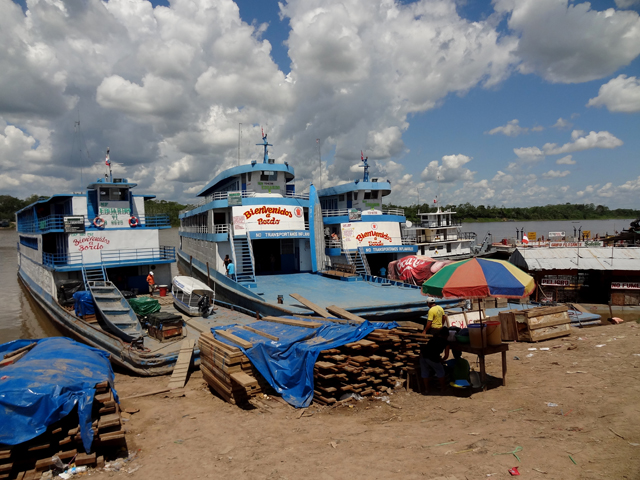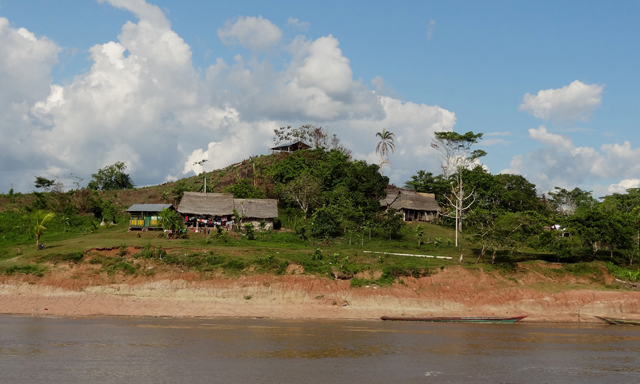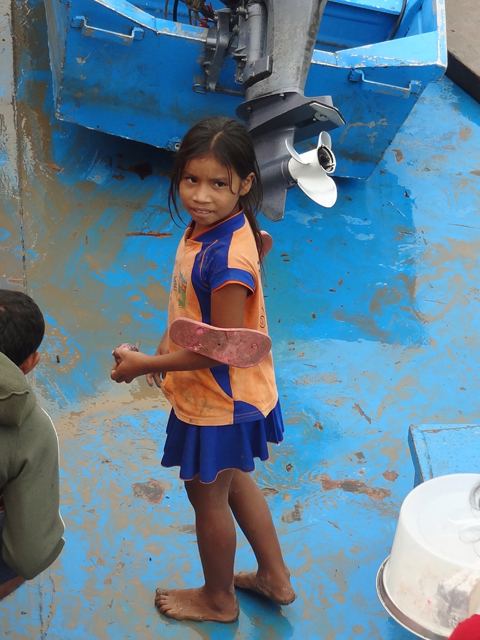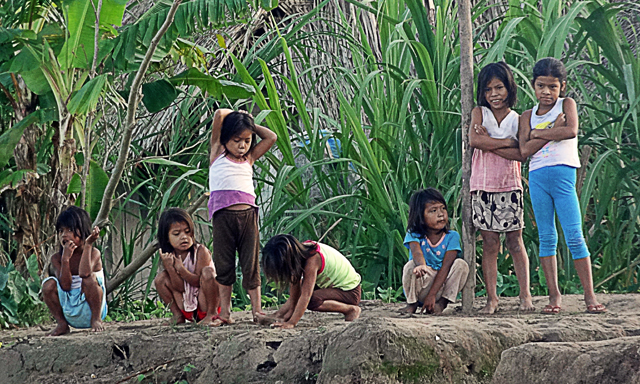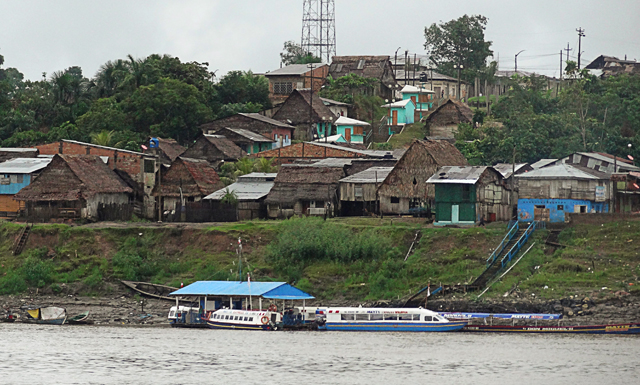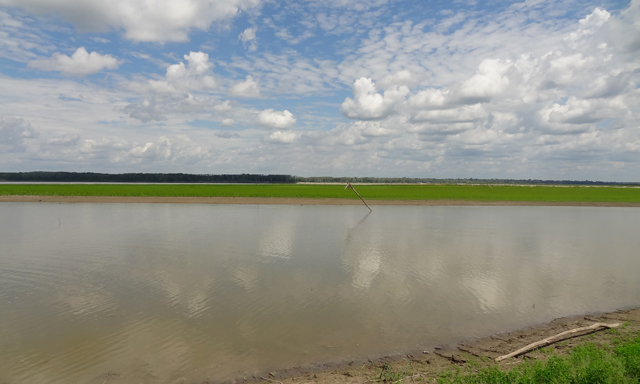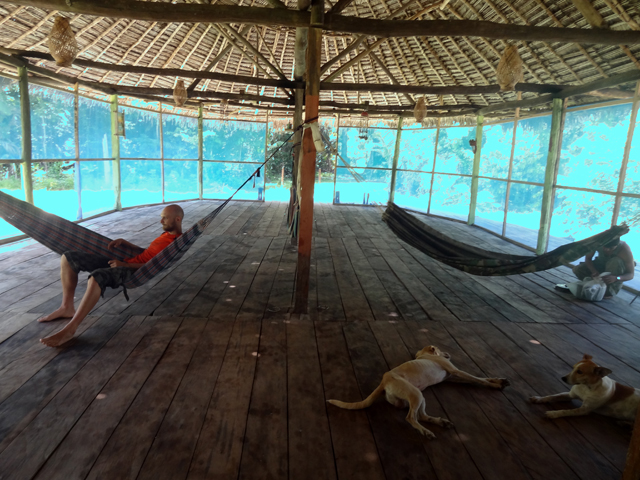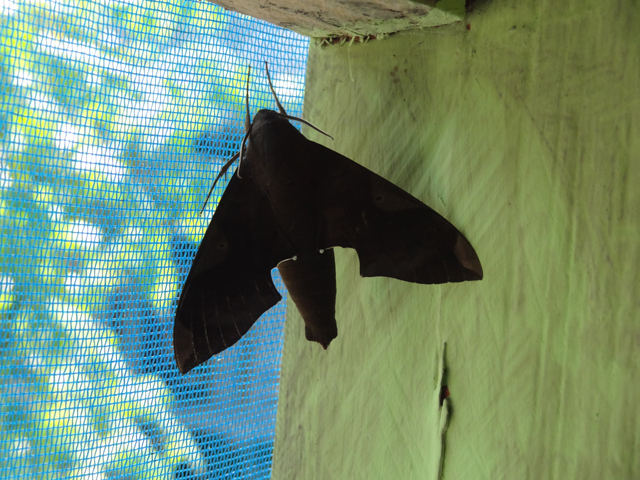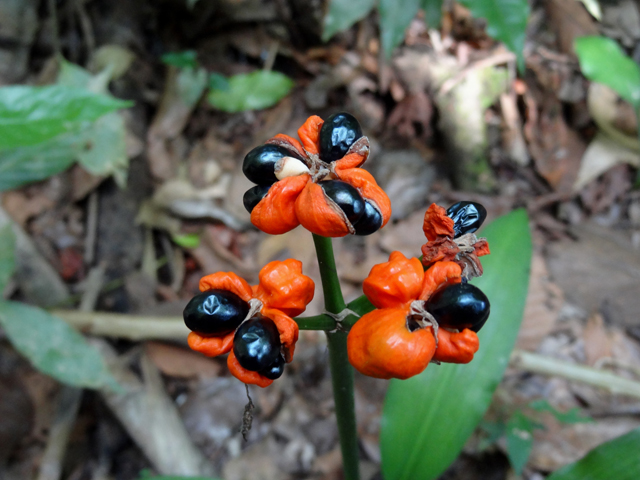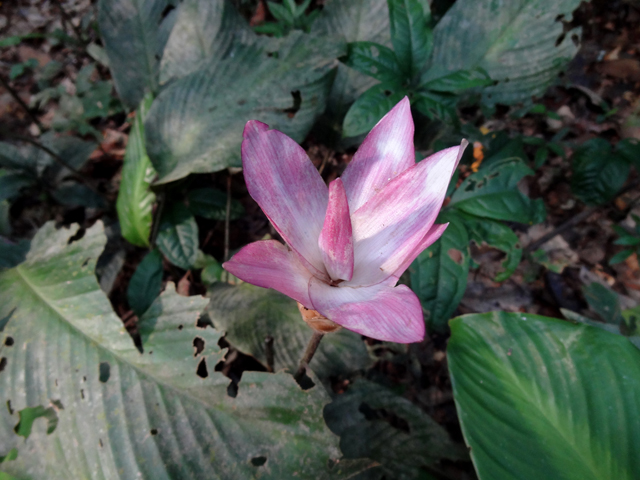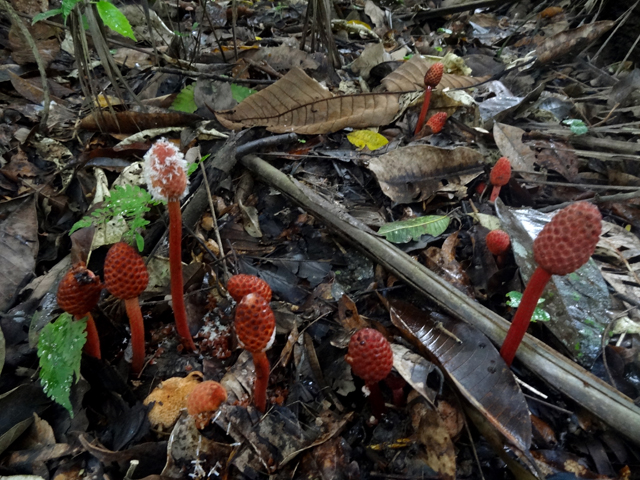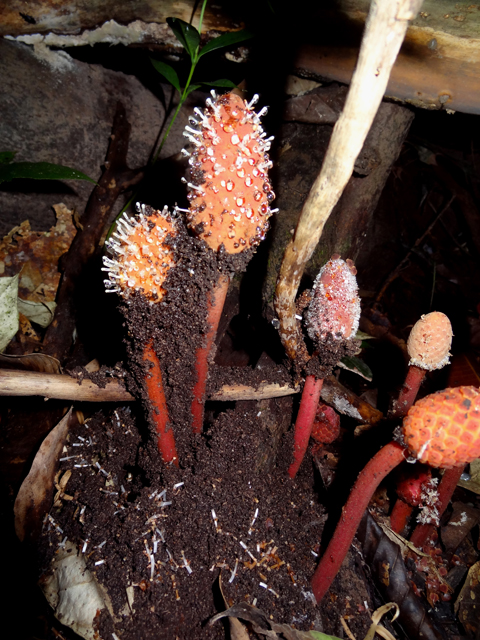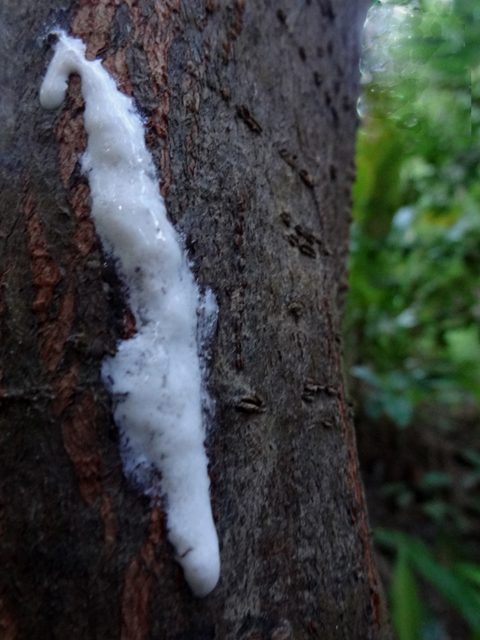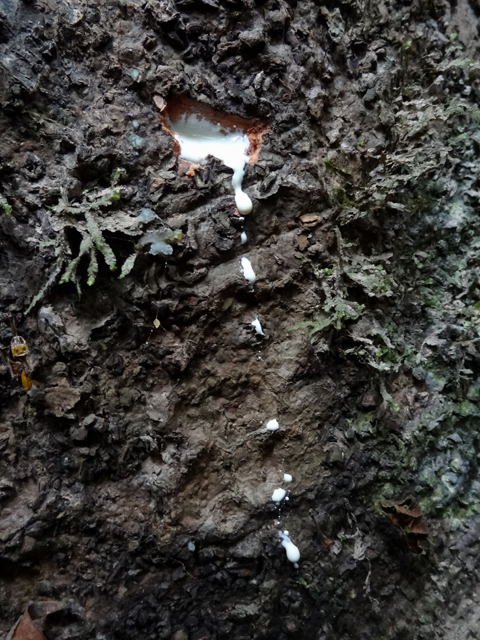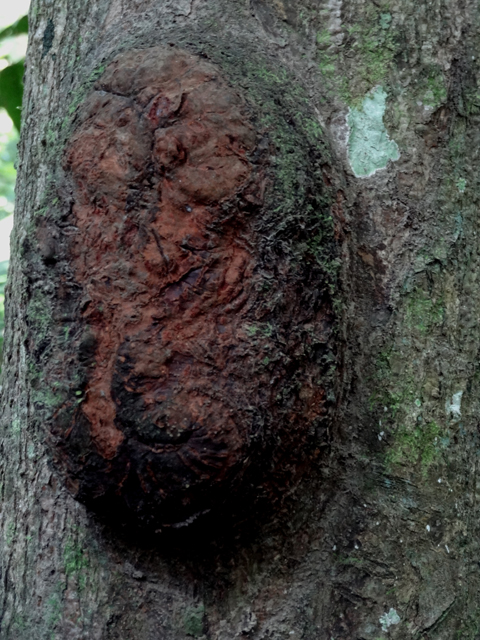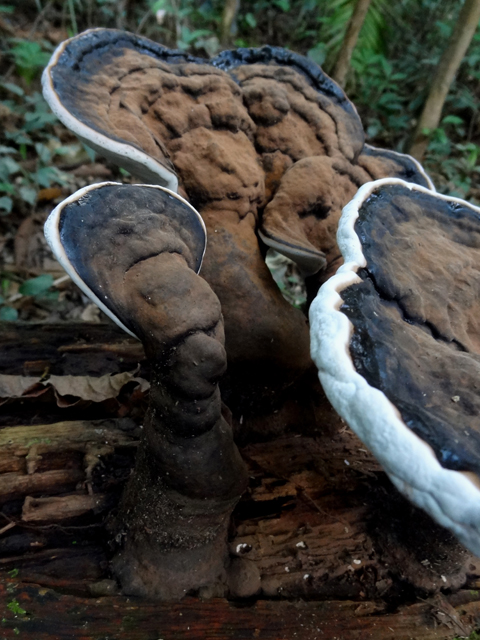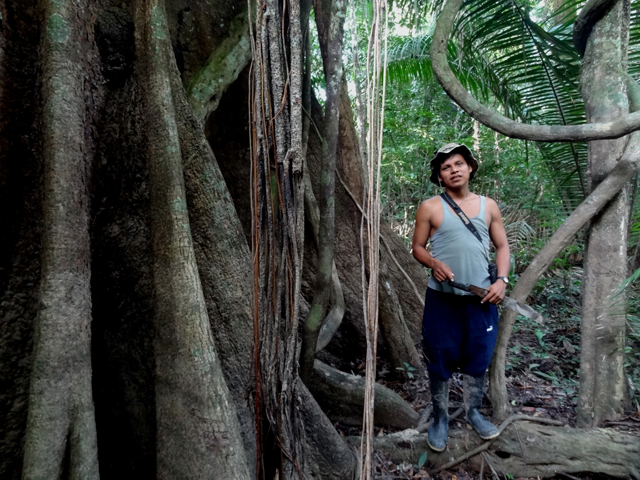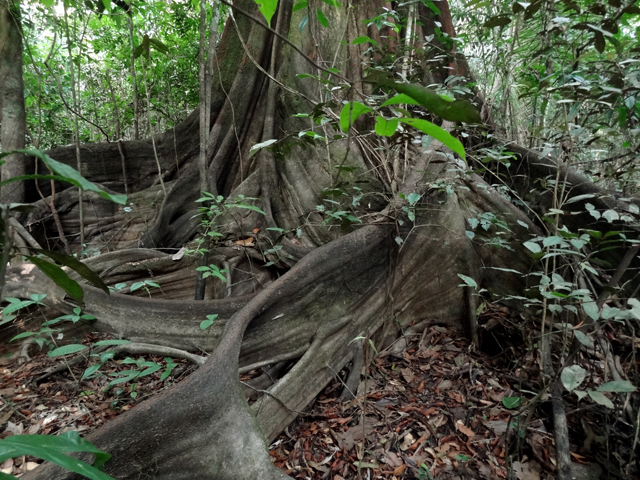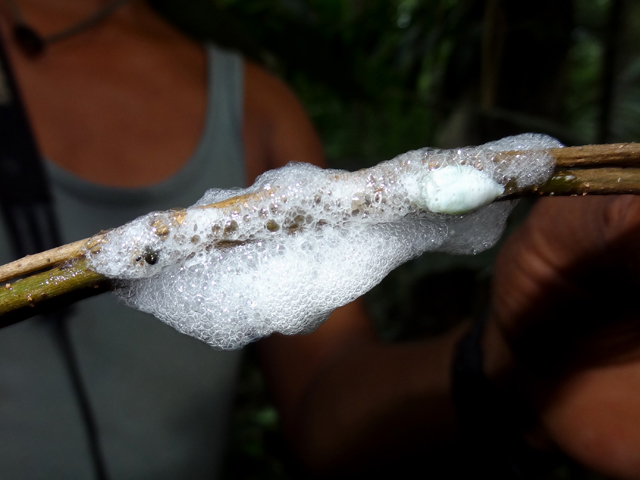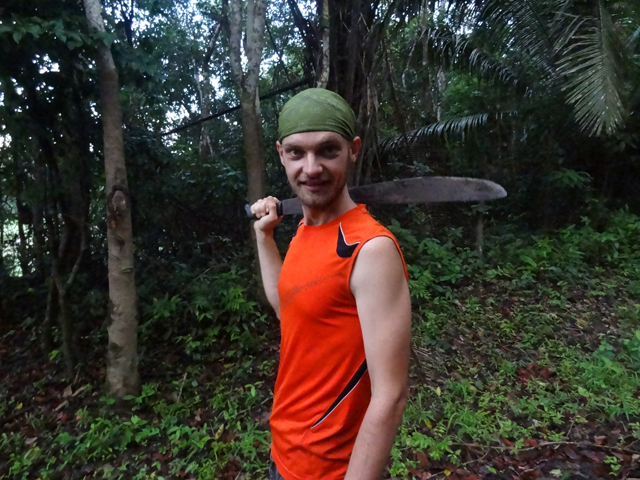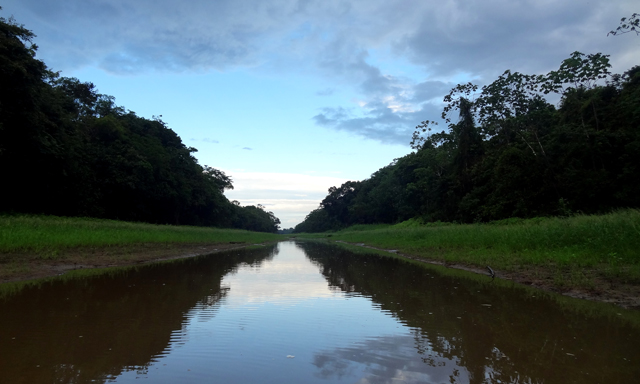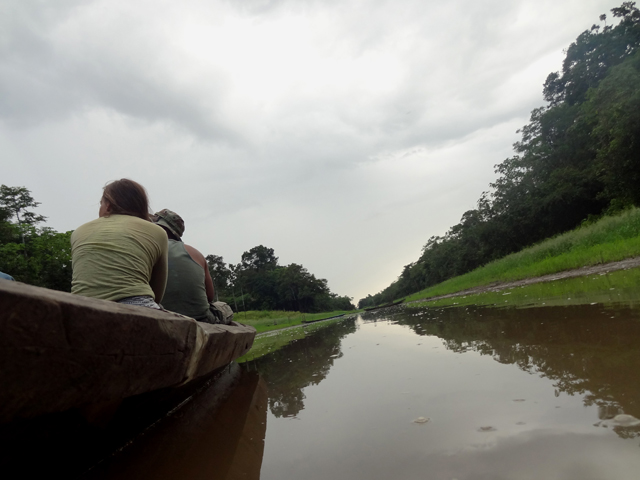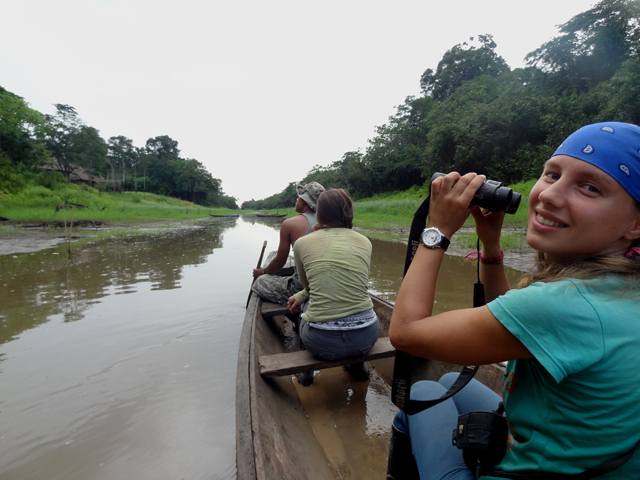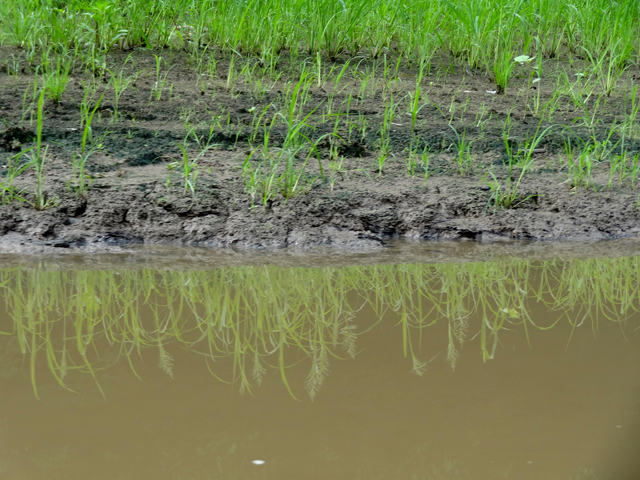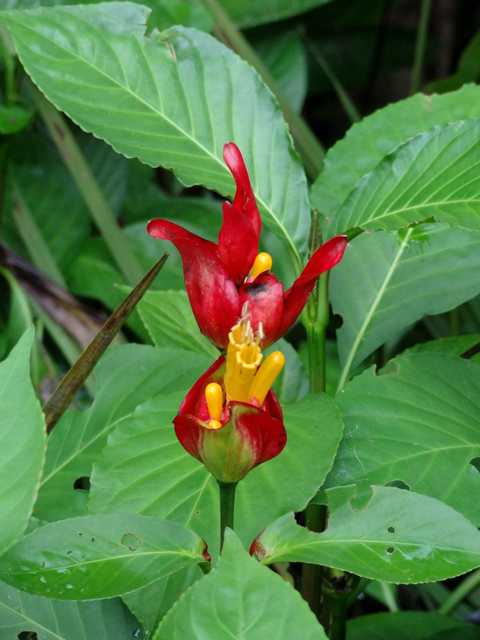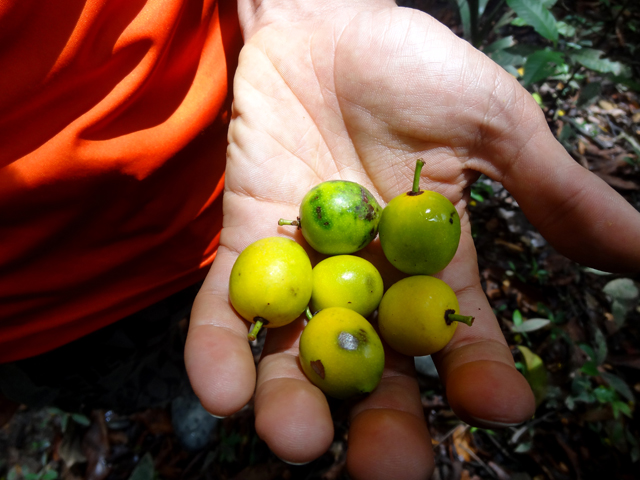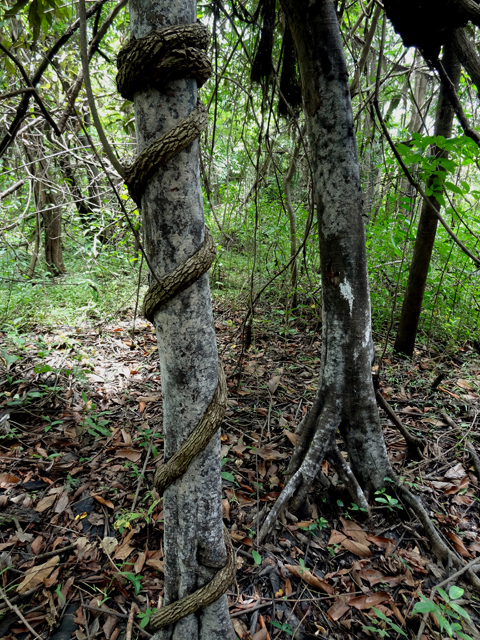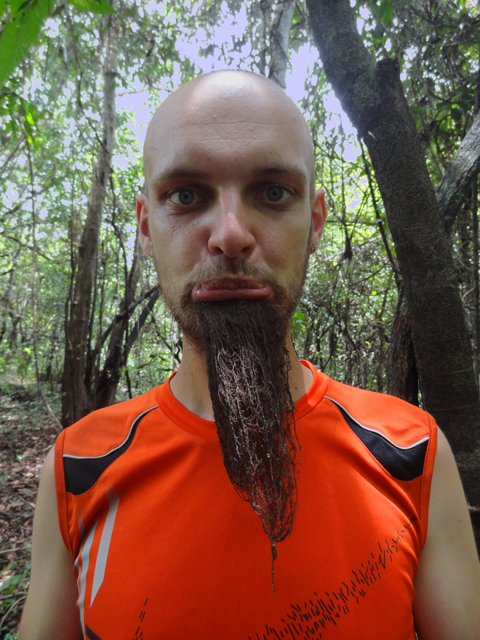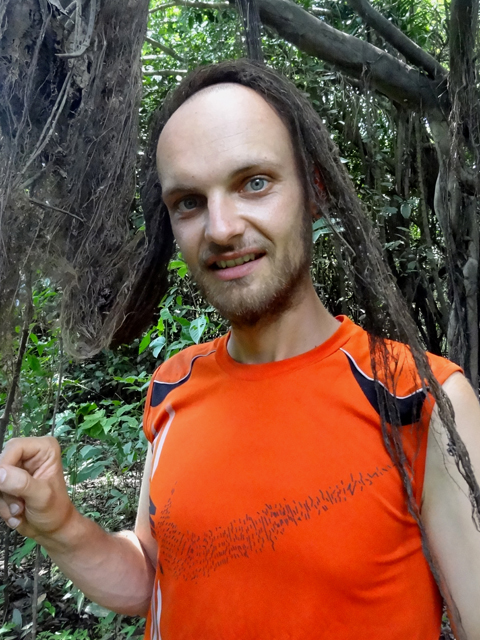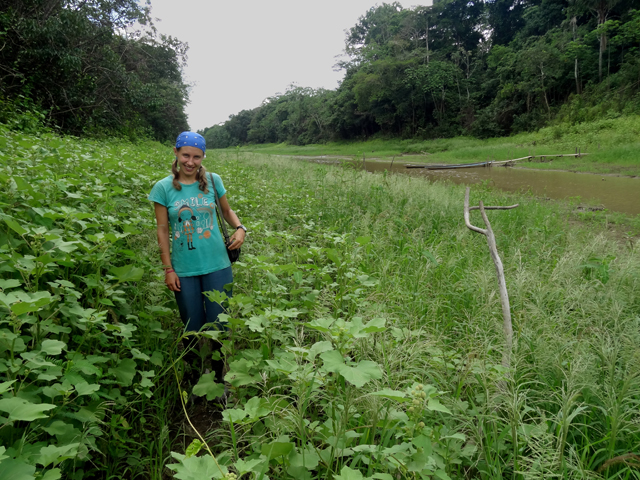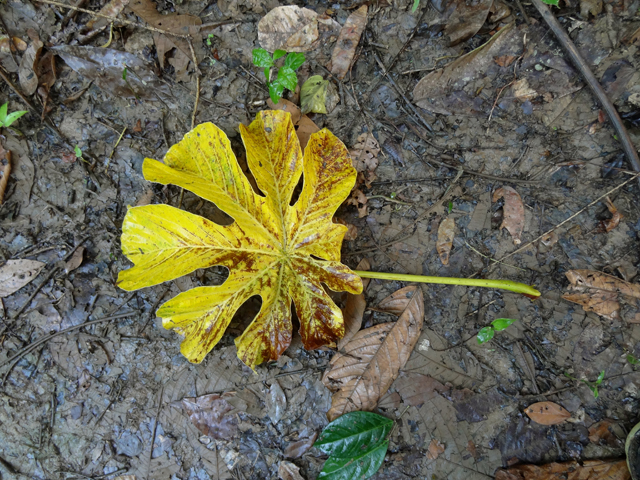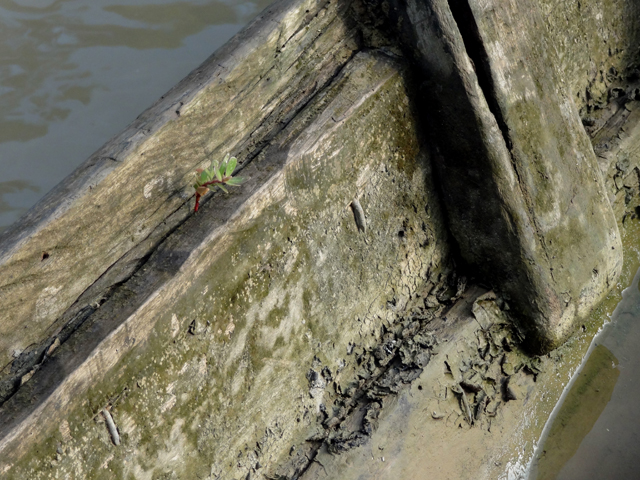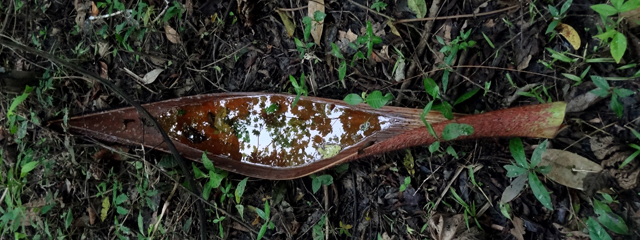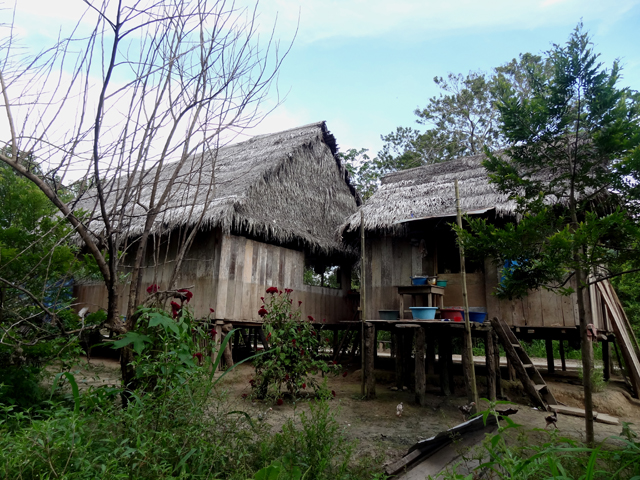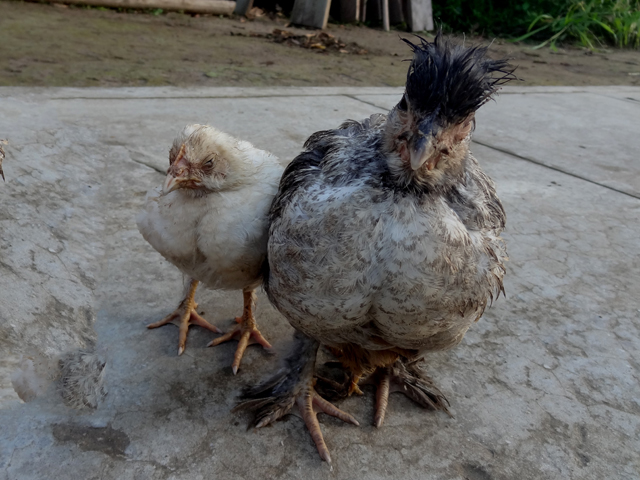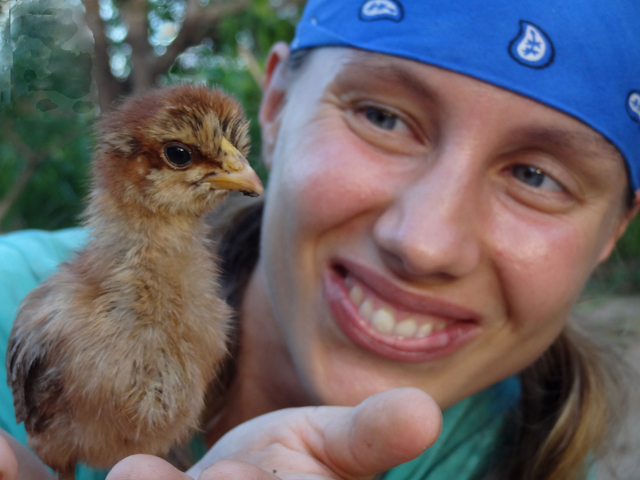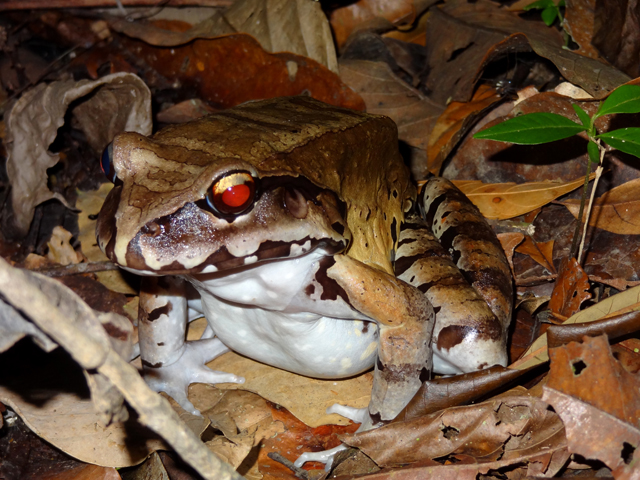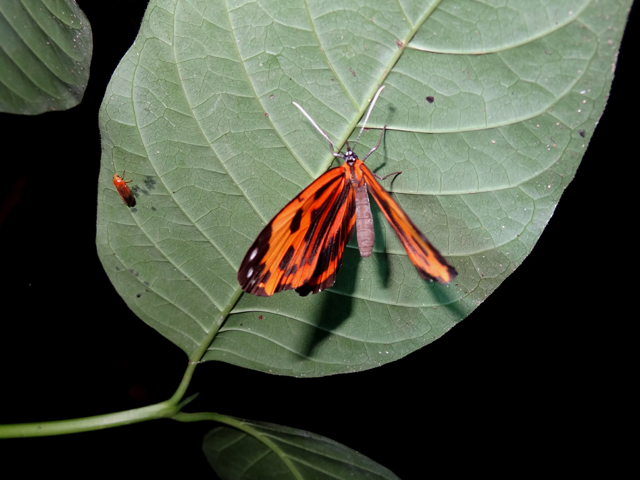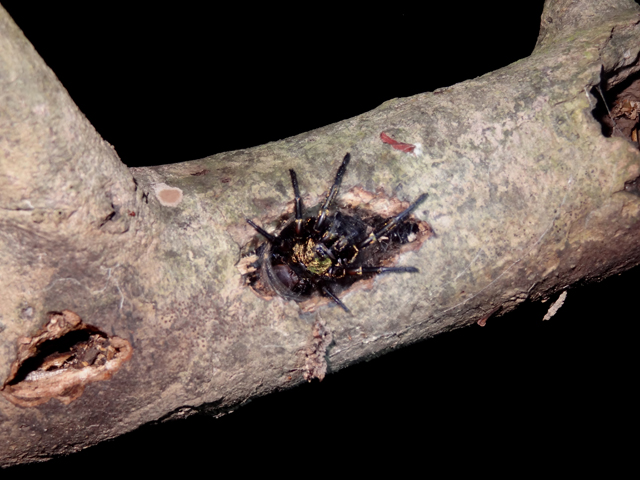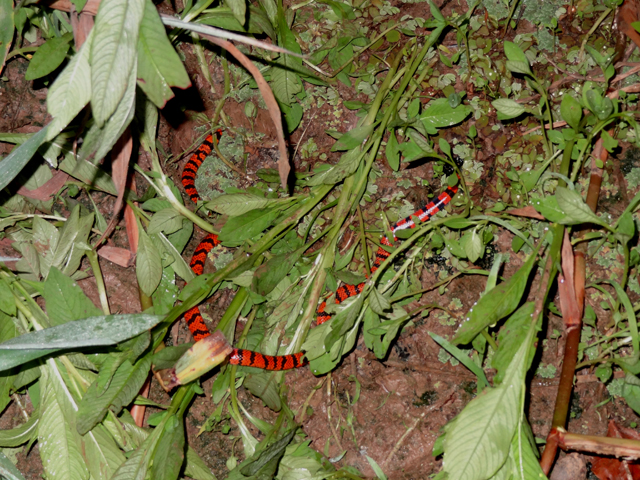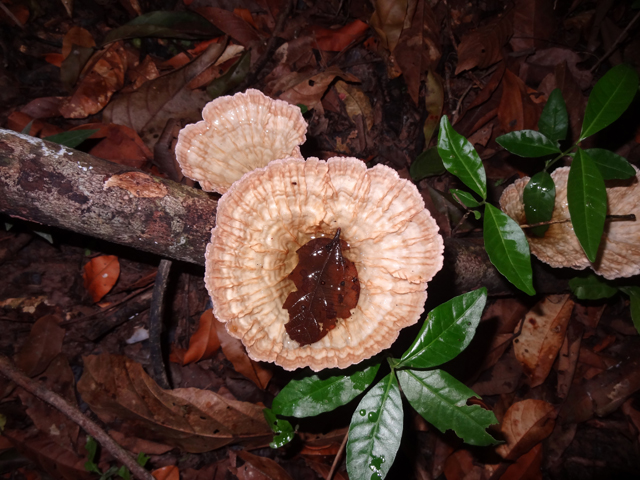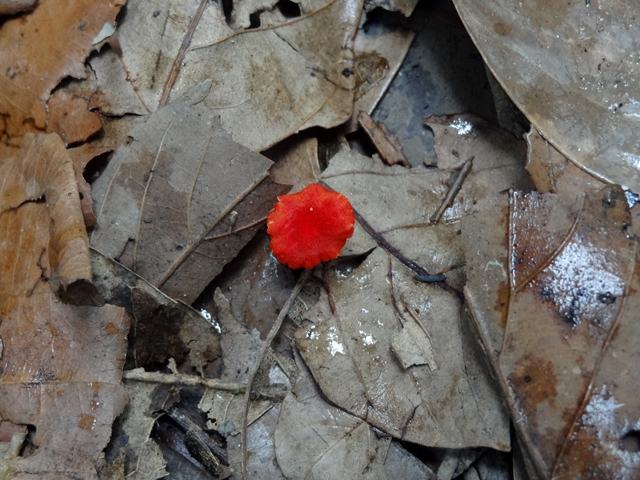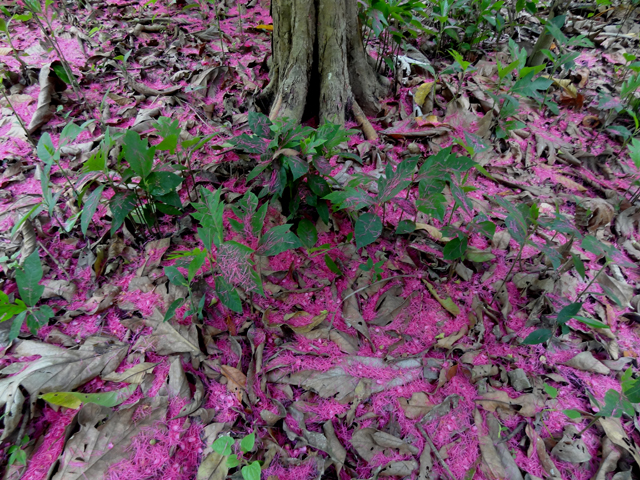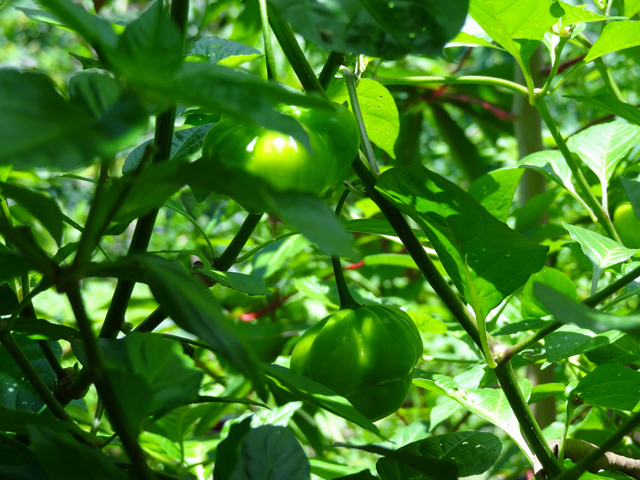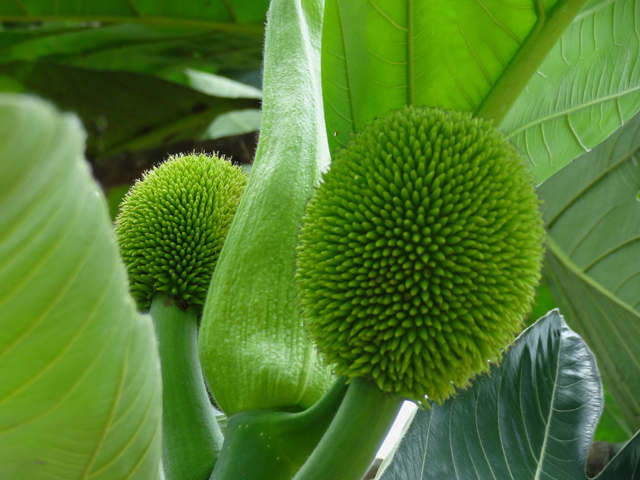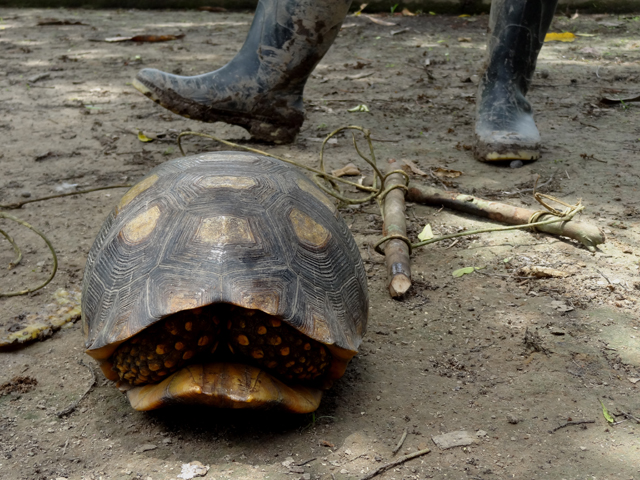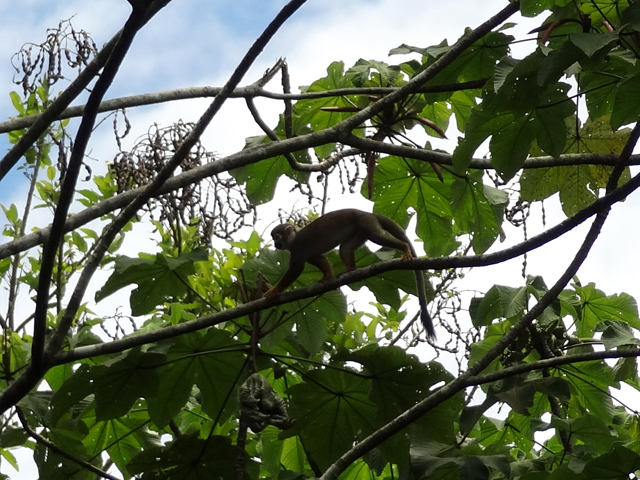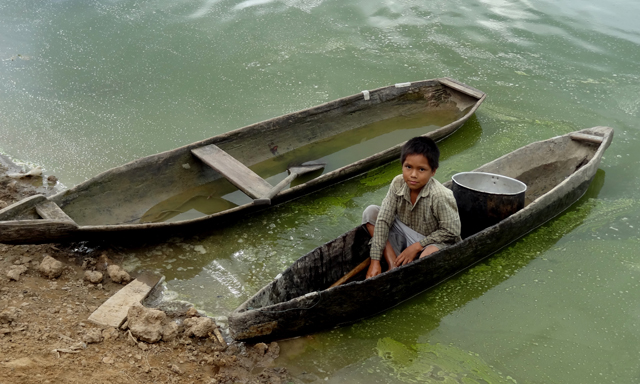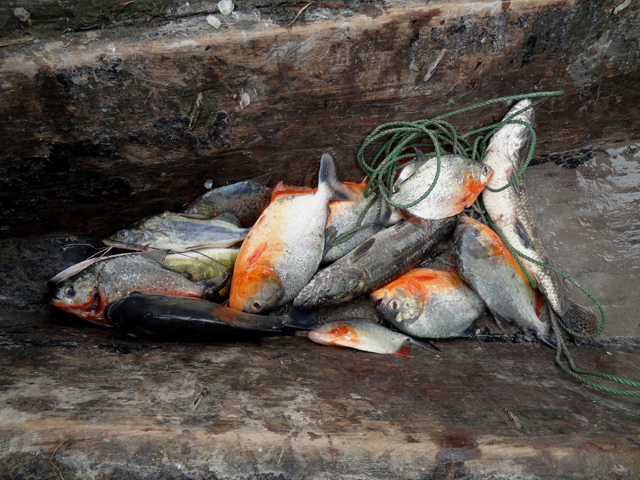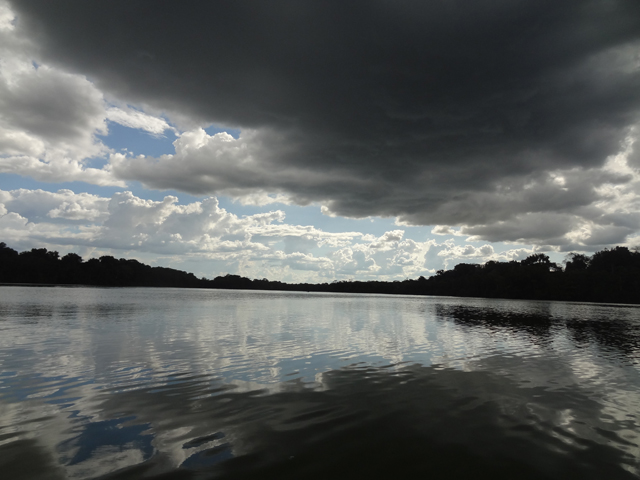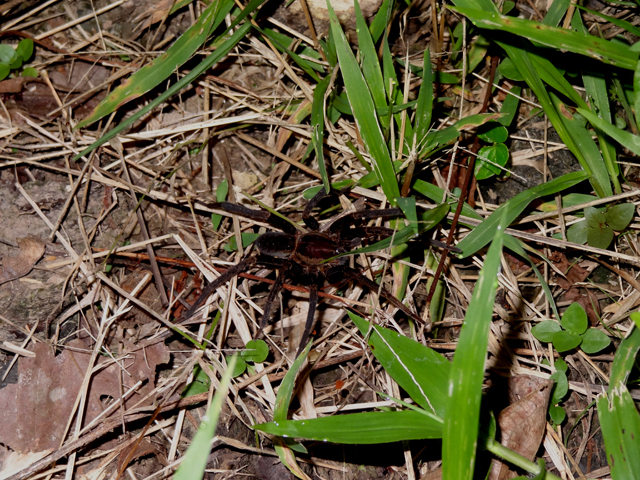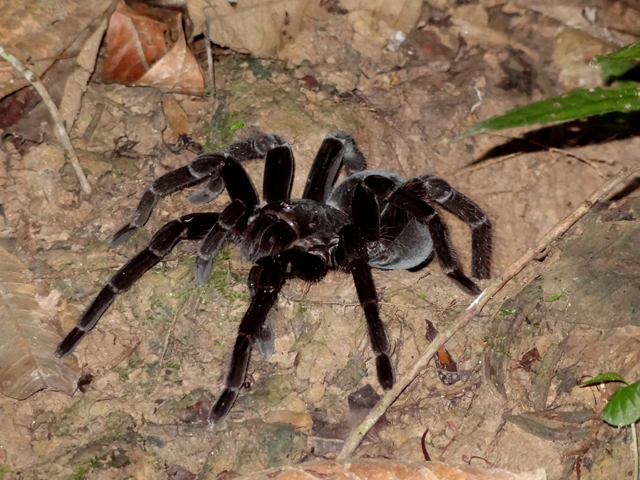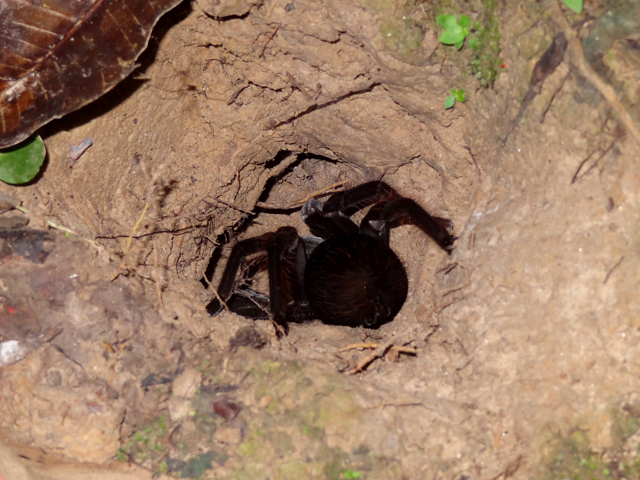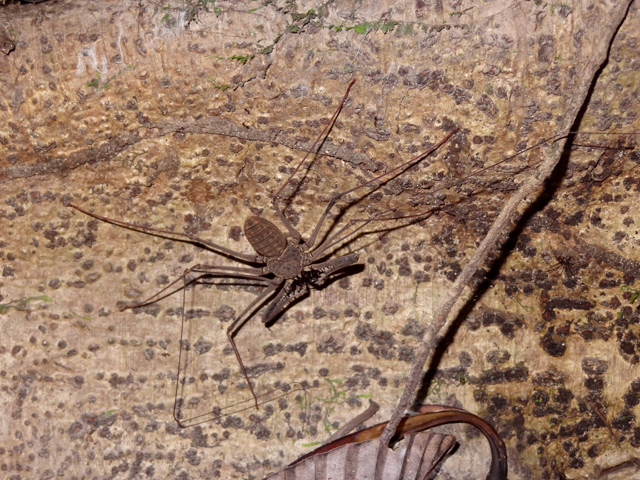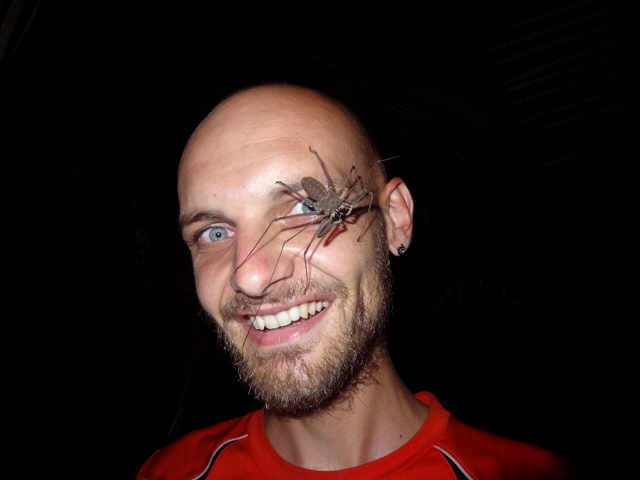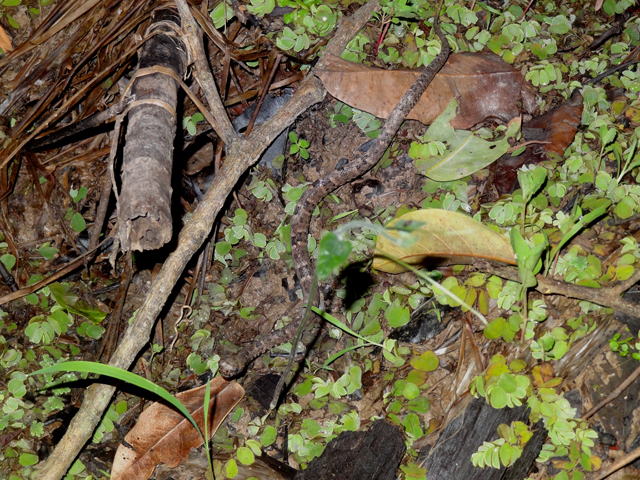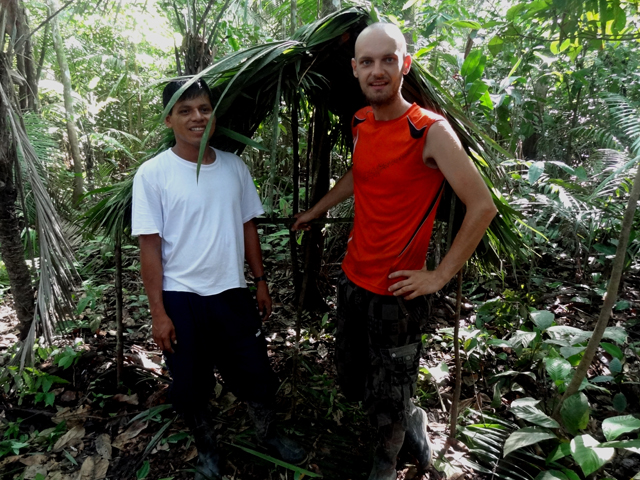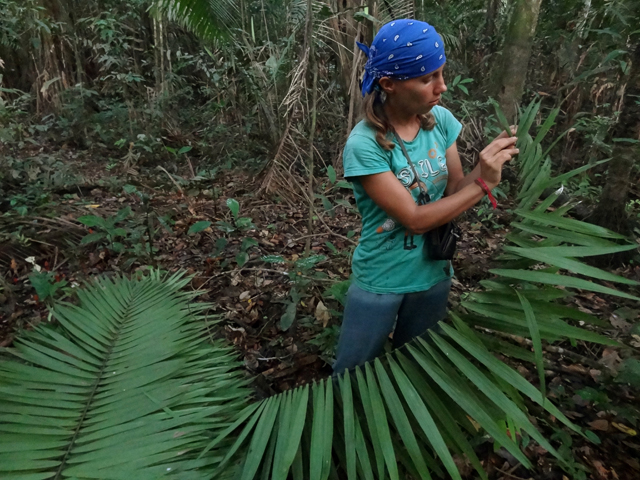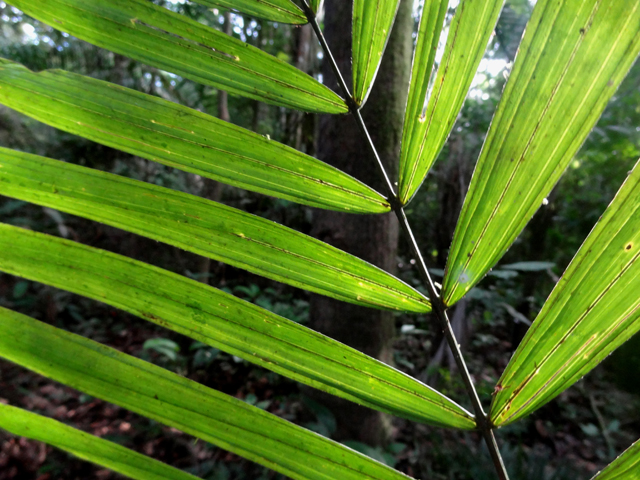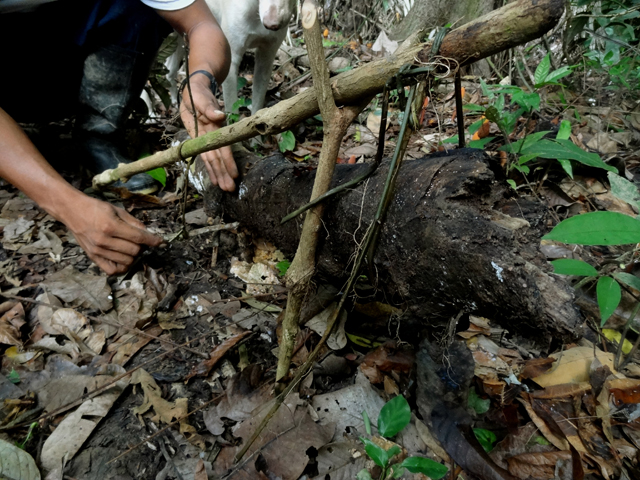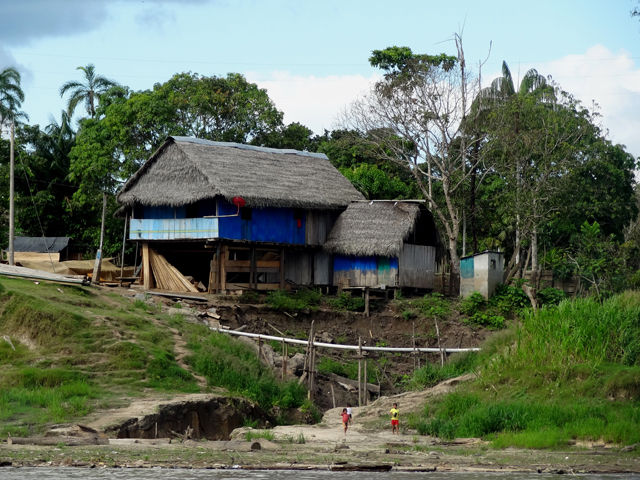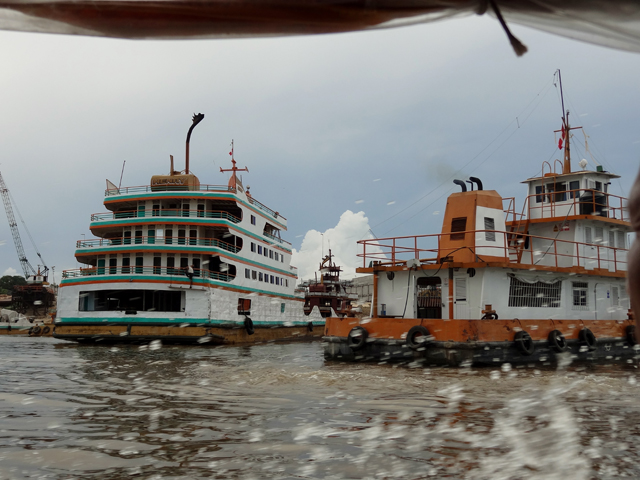Peru - the Amazon jungle tour
Yurimaguas - Iquitos boat trip through the Amazon:
While an internal flight would have been a much faster option for about the same money, ever after watching the "Motorcycle Diaries" we wanted to experience a journey through the Amazon on board of one of those big old ferries where you can pass a few days peacefully swinging in your hammock and looking at the muddy river and the endless jungle along its shores. The overland itinerary to get from Trujillo to Iquitos (our destination in the Amazon region) is pretty long and looks as follows: Trujillo - Tarapoto (by bus, 20 hours, 65 soles) - Yurimaguas (by shared taxi, 2 hours, 20 soles) - Nauta (by boat, 2-4 days depending on the level of water and luck, 100 soles) - Iquitos (by shared taxi, 1 hour, 10 soles). We did the whole trip in 3 days and 3 nights, taking only a few hours break in Yurimaguas where we first checked into a hotel (the original plan was to rest one night before undertaking the Amazon voyage) but had to leave the same day when we found out that there would be a break of a couple of days till the next boat.
Our Amazon trip was exactly what we'd imagined it to be - peaceful and pleasant. Despite how monotonous the scenery seems at the first glance, it actually keeps stealing your attention from a book you are reading all day long: now with enormous black clouds gathering in the sky, now with a huge rainbow bridge arching from one shore of the Amazon to the other, now with a stop at some tiny jungle village to load even more bags of locally grown potatoes or rice. Our "Eduardo 14th" ship was actually much more comfortable than we'd imagined - with a very spacious deck shared by very few passengers, a few plugs right next to our hammocks (so we could use our laptop and electronic book) and pretty decent meals (prepared and served to us according to a strict schedule by a sweet crew of ladyboys three times a day). This routine was only disturbed a couple of times during the whole trip - one time by a group of jungle kids delivered at "Eduardo" by fastboats from the nearby village to sell the passengers "boredom-fixing" foods like crocodile meat, yucca, icecream etc. The other disturbance happened during the second night when all of a sudden somewhere around 2am we heard a lot of running and shouting among the crew, accompanied by scary squeaky sound of the ship which felt like we were getting stuck in the Amazon muddy bottom (we heard that happens from time to time on such ferry cruises) but luckily nothing happened and after a short while we were peacefully sailing on. Early next morning we arrived at Nauta - a tiny port village connected to Iquitos by road. Disembarking there would save us a whole extra day of sailing, so we did it together with the rest of the passengers, and from there caught a shared taxi to Iquitos.
Ferries at Yurimaguas:
On board of "Eduardo 14th" ferry:
A typical jungle village on the Amazon banks:
A rainbow over the Amazon:
Our ferry stopped many times at various villages to load/unload things (like these mattresses):
Girls from a jungle village watching our ferry:
Nauta:
The Amazon jungle tour:
Deciding on what kind of tour to do and who to do it with took quite some research as we thoroughly interrogated :-) a lot of agencies in Iquitos as to what they could offer. Some offers were easy to discard as they were purely touristy shows where they'd take you to some jungle tribes that would dance for you, make you up as a jungle warrior for pretty pictures etc. As to the rest of the offers, they all sounded pretty similar - they'd take you to a remote part of the jungle where you'd stay in a lodge or a camp, you'd do a lot of jungle walks with a very experienced guide, fish piranhas, explore the night jungle, swim with the Amazon dolphins, see multiple species of birds, monkeys, snakes, insects, medicinal plants etc., with the main strength (of every single agency) being an incredible flexibility in catering to your specific needs :-). We did have one such specific need - we wanted to try to do a kind of survival trip through the jungle where we'd walk through it day after day camping along the trail, making fire without matches, eating only what the jungle could provide (fish, fruits, protein-rich bugs) etc. However, our research quickly revealed the fact that most likely it was impossible. Despite the agencies' claims to the contrary, we could sense that behind vague definitions like "We can provide you with a 50%/60%/75% survival trip", or statements like "You'll do a survival trip but we will bring food just in case" lay a very simple truth - they couldn't do it, as they had an established way of doing things, so ironically "We are very flexible" in the case of Iquitos agencies meant nothing but "We'll do our usual thing and you'll probably like it anyway". After checking many agencies which all sounded pretty much the same and offered very different prices (from 100 to 400 soles per person per day), we picked a family-run business whose owner we liked more than the others (although only by comparison) and the next day after receiving my Colombian visa left for a 4-days jungle trip (we paid for 3 since we agreed that the first day would be for free based on the fact that they could use collective boats to deliver us to their part of the jungle). And here's a summary of what we did, saw and learnt during our Amazon tour:
At the agency we met a really charming American girl Erin together with whom we'd explore the jungle for the next 4 days. After a couple of hours by boat we arrived at the village of Centro America where we were welcomed by our super-guide Raul. Before I describe our jungle walks I should mention that just as we suspected the promises about survival approach to this tour never materialized and according to what we saw - never could (with either of the agencies), at least not in the short period of time that we could pay for. As a mere speculation, it's quite possible that if you pay for a whole week and thoroughly check with your agency what route you'd do, it might be possible to do a survival trek through the jungle. However, if they stick with the adjective "flexible" to describe your survival trek itinerary, most likely it won't be a survival trip. Another good check to do is to ask them to show you the trekking equipment they'd use - our agency didn't even have a backpack for the guide to carry the picnic gear the day we went to fish piranhas. Actually, from the moment we arrived at our lodge and Raul told us the plan we could see that we'd be doing all the usual things as everybody else. And while it was disappointing, we also realized that first, we might have had exaggerated expectations about what was possible in the jungle in three days, and second, our guide was so knowledgeable that even with the standard program he made it into a special experience.
The days we spent in the jungle were filled with long walks, each of them within a few kilometres radius from the lodge. In our lodge we had simple rooms with wooden beds covered with thick mosquito nets, shower that only worked when rain water was available and comfortable hammocks in the common area where every evening we could enjoy the magnificent sound-light performance of the giant fireflies flying around to the accompaniment of the jungle sounds.
The Amazon:
Our lodge:
Raul showing us the source of light of this giant firefly (no insect got hurt in this process):
All our walks targeted a specific subject:
Day 1, 2-5pm, the Medicinal Plants and Insects walk. Just some of the things we saw: a tree with white resin which is used to kill parasites, another tree with iodine-like resin which can disinfect and heal a wound, a tree with such poisonous resin that one drop of it could kill a human being, pretty strawberry-like mushrooms which are used to cure diabetes, the rubber tree the sap of which turned into a gum-like substance in our hands in a matter of seconds, giant ants that are busy the whole day catering to their queen which is so well protected that only three parts of its body are accessible - for eating, reproducing and disposing of excrements; termites that build tunnels on the trunks of the trees from their excrements and are involved in egg-protection mechanisms of various birds. We also tried a small yellow sour-sweet fruit and learnt that in order to identify whether a certain fruit was suitable for eating we should check whether the monkeys liked it - a decent amount of eaten fruits under the tree would indicate a nonpoisonous one.
On the left - a termites nest:
Mushrooms that cure diabetes:
Wasp nest:
It was amazing how the sap of almost every tree in the jungle had some kind of practical application:
On the left - a growth on a tree that helps women recover fast after pregnancy (Raul gave an example of a woman from his village that has 15 kids); on the right - a petrified mushroom used to produce decorative pieces:
Our guide Raul and Jordi:
Giant ants:
A weird foamy bug:
Jordi's favourite part of jungle exploration - walking with a machete:
Day 2, 6-8am, the Birds walk. Just some of the birds we saw: the lyre which has a long tail and the males of which have an incredibly special song (we left for this walk early to be able to hear it), the falcon, the vulture, the eagle, the heron, the kingfisher, red-capped cardinal (in Spanish Bandera Alemana, or "the German Flag", naturally named like this because of its colours), the brown-and-yellow marshbird, owls. What struck me during that walk were all the stories about how different bird species protect their eggs and babies, for instance, parrots will build a nest with two entries (one fake, one real), the marshbird will lay its eggs in the water on the shore of the Amazon river because its babies have a little hole in their beak through which they can breathe and this way stay invisible to predators, another bird won't even build a nest and instead when a predator is approaching the eggs will start staggering away from the eggs as a distraction strategy. When I contemplate upon the absence of any apparent necessity for such a diversity of species and their survival strategies, as well as the beautiful logic behind each uniquely crafted strategy, I see it as proof of the intelligent design behind the world around us and therefore - the Designer...
Day 2, 10am - 2pm, the Sloth (oso perezoso, or lazy bear) and Iguana walk. That morning walk was a lesson on the jungle camouflage techniques and a training in spotting these two incredibly camouflaged species. In the end we managed to find 5 sloths and 3 iguanas, but all thanks to our guide who'd usually pass us the binoculars after he'd spot an animal with precise instructions where to look. A piece of information that really struck us was that the sloth was a kind of a jungle drug addict: its favourite tree is rich in alkaloids which make this prehistoric black-and-white bear-like animal go into a state of such lethargy for the rest of the day that it doesn't react to anything and even a simple excretion process takes it something like half an hour :-).
The sloths we saw were all quite far so that's the type of shots we got:
Can you see an iguana in this zoomed-in cropped shot? Imagine our guide spotting it without binoculars from distances much farther than this!
Jordi finding various applications for this tree growth that resembled hair:
All three of us under a giant ficus:
In Raul's village:
Day 2, 4-8pm, the Monkeys, Snakes and Crocodiles night walk. After checking out a couple of groups of monkeys during the remaining light hours, we waited till it got completely dark and then walked past a few spots along the river to find crocodiles. In the end we found them at a small lagoon but because it was too muddy to get closer were able to only see their bright yellow eyes menacingly piercing the darkness. On the way we saw (and almost stepped) on a few poisonous snakes (like the bright-red coral snake and a viper) and felt very grateful to the manufacuters of the reliable wellington boots!
We saw a few of these giant bullfrogs:
Coral snake:
Pretty mushrooms:
Day 3, 10am-5pm, Piranha Fishing day (the only one that had a tiny element of survival). We had a 1.5 hour walk to the lagoon where we tried fishing piranhas that would be our meal for that day. And while locals were doing much better than us with their huge nets, we did fish over a dozen fishes between the four of us using very simple rods. And while I should add that Jordi and I normally don't fish since we believe in avoiding killing of living beings as much as possible, as part of a survival experience for just that once it was acceptable... The fish soup we had that evening was really delicious!
Passing Raul's village on the way to the lagoon:
This gorgeous flower of pomarrosa tree later develops into a delicious sour-sweet fruit:
In the garden of Raul's mum:
The bread tree fruit:
This tortoise would be cooked in a couple of days as a special treat for a local guy's daughter's birthday. And while it's a very sad phenomenon, we don't think it's possible to change the locals' mentality through a simple conversation:
This hole underneath a school building is actually a local prison!
Monkeys:
The two dogs from our lodge - John Kelvin and Gringo - insisted on joining us for the fishing trip:
At a house on the shore of the lagoon:
Even small piranhas have really sharp teeth so it was a bit scary when a couple of times they fell off my hook into the boat before I passed it over to Raul. Luckily nothing happened so we still have all our toes :-):
The lagoon:
Day 3, 7-8pm, the Spiders night walk. On our last night walk through the jungle we saw quite a few giant spiders: one enormous baby spider wrapped in soft white web stuck to the trunk of a tree; a huge black tarantula the sight of which for the first time made all three of us utter the most natural "Wow" sound in a loud unison; a scorpion-like spider with very long legs which "posed" for our photos thanks to Raul on top of Jordi's and Erin's faces (the spider was freed before I had a chance to get one of those memorable shots :-). Apart from spiders, we also woke up a woodpecker, a bunch of giant bullfrogs with square backs and sweet white bellies and a millipede, or "mil pies" ("thousand-legs") in Spanish.
Ignorance is truly bliss and walking through a night jungle with a torch will rob you of it once you realize that almost every single tree and bush are home to some venomous creatures:
A millipede has two legs per each segment of its body, as opposed to centipede that has a single pair of legs for each body segment:
Day 4, 6-9am, the Hut Building crashcourse. That morning Jordi and I learnt building a small hut in the jungle using only a machete and the natural materials supplied by the jungle: cohune palm tree leaves to make the thatched roof, lianas as ropes and sticks to make the structure. It took about 2 hours to make a tiny hut and we heard that local villagers can take up to a year to build a proper house - a process for which they require hundreds of leaves that have to be brought from the jungle by porters and prepared (folded in half and dried) by specialized people. After we finished the hut Raul also quickly showed us how to build a rat trap to be able to hunt an animal if we ever had to survive in the jungle. These last two activities were both provided on our request and gave us a glimpse into at least what it could be like to try to make it through the jungle with nothing but a machete.
Building a hut:
The top layer of the triangular roof of a hut is the most secure one and is made of three layers of cohune palm leaves, the bottom and top of which are woven into this kind of pattern:
Cohune palm leaf:
Raul showing us how to build a rat trap:
Day 4, 10am-1pm, the Amazon Dolphins. That morning we walked to the Amazon to try to see the Amazon dolphins (they don't live in the tributes, only in the Amazon itself). But while a small group of them did swim in our direction as we were making noise and imitating the baby-in-distress sound to attract their attention, they never really approached us close enough for us to be able to swim right next to these delightful animals. On the way back I mentioned to our guide how we learnt from a National Geographic program about the fact that scientists proved the existence of mermaids and were truly surprised when he told us that a few years before they found a creature in the Amazon which looked exactly like what we described to him and how they were studying it until one day it died right before they were able to free it back in the Amazon where they caught it! This was the last trip of our jungle adventure and after that we caught a boat back to Iquitos.
Walking to the Amazon to see the dolphins:
A huge pomarrosa tree in Raul's village:
On the way to Iquitos:
The view of the Amazon from the plane to Lima:
And while it wasn't really survival, we really enjoyed this jungle trip, all thanks to our super-guide Raul. A real child of the jungle, he was literally born inside it as his mum went into labour when she and her husband went to collect some bananas and the child had to be delivered with the help of some villagers inside the jungle (Raul's story reminded me that of Siddhartha Gautama :-). As if blessed by some jungle spirit, the boy grew up so passionate about "la selva" (jungle) that he studied every single plant, insect, bird and creature he could find, all through observation and at times painful trying with curiosity as his single motivation. He told us that he must have been bitten by every type of insect, spider and at times poisonous snake that exists in his jungle, that as a child he'd climb up the trees to just observe how every single species of bird builds its nest and protects its eggs, how the termites build their tunnels etc. etc. All this unfathomable knowledge coming from observation and experience coupled with curiosity about the Latin names and extra information he was able to learn from the groups of visiting biologists made him into an excellent guide. He told us that at some stage he was considering becoming a shaman, so he went into a special training program which includes solitary living for about a month somewhere in a hut in the jungle, a very strict diet for bodily purification and abstinence from sex for about 5 years.
Part of the program is also drinking Ayahuasca - an Amazon plant which has very controversial reputation: while locals claim that if this drug is taken under the supervision of a proper shaman it will purify your body (through its purgative properties) and give you visions about your past, present and future, the reports of foreigners who come to the Amazon jungle to try it vary dramatically - some say it's great, some say it's harmful, but it's also probably true that many people who try it are only after its hallucinogenic properties and don't have the proper expectations about its affects. Raul told us that during his shaman training the purification diet made him sensitive to the vibrations of different plants which is a quality every shaman needs to cultivate to develop the true understanding and respect for plants in the jungle - only in that case will they reveal their true properties to him. He told us that Ayahuasca enhanced this effect by giving him visions through which he received direct knowledge about the medicinal properties of each plant. He said that he also saw his past, present and future and that every time he saw his future he'd see himself in the jungle with strange people he'd never seen before (at that time he'd never seen a foreigner) - apparently being a guide, not a shaman was his real destiny, although at that time it was difficult for him to believe it was possible as he didn't speak a word of English and didn't have the money to pay for classes (which proved to be unnecessary as he picked it up on the fly once he got the opportunity to become a guide).
When he left his home a couple of times to visit Iquitos he says he felt like half of his soul was missing. Every word he says about the jungle is filled with genuine passion for this amazing ecosystem and a strong respect for the power of nature. There were also truly curious stories which I'll just mention here and leave it up to you to decide what you think of them. He told us that the jungle is full of spirits and that they can sometimes use their power to confuse a human-being. He backed up these legends with personal accounts. Once when he was a kid on a hunting trip to the jungle he saw an armadillo. It was was extremely rare to see that animal at that part of the jungle and that time of the day, so he got very excited and tried hunting it down. But no matter what he did to the animal, the armadillo stayed alive, so he felt that there was something very strange about that animal. And as he followed him deeper and deeper into the jungle he lost the path and had to spend the night in the jungle on a branch of a tree, where he waited till the next morning when a search party sent by his father reached the place where he was so he was able to find the path again. After that his father explained to him that what happened was that a spirit in form of armadillo tricked him. He also explained to his son that it was quite common for evil jungle spirits to attack the minds of human beings by making them feel confused about their location, as they could make a person see the jungle in a different way. It was then when he learnt the trick of getting rid of such unwelcome possession by weaving a couple of leaves together, then throwing this woven piece behind the back and walking away from the spot where the pieces land in an attempt to distract the spirit and thus get free from it... Raul told us how this trick actually helped him in another interaction with an evil spirit: there was this other time when we was walking through the jungle with a foreigner when all of a sudden he felt that the jungle looked different from every side and he could no longer find the path. No matter how hard he looked he couldn't find it, so he asked the foreigner to wait a bit and went away to perform the "spirit shaking-off ritual", which worked so he was able to find the way without as much as even alarming the unsuspecting French guy.
Since most of our jungle walks passed through his village, Raul also told us a lot of curious things about their life and culture. For instance we learnt that the local communities use common law to manage their affairs and an agreement about a specific subject gets is settled upon based on the votes by the entire community. Some of such regulations include an obligation for every family to cut the grass around their houses to diminish the risk of bites by poisonous snakes, or a regulation about mewing of the school lawn where every family is obliged to cut the grass on quite a big part of it (they use machetes to do it) and if somebody fails to appear on the day it's done as punishment this family will need to do many more square metres. For people who fail to comply with any of the established laws of the community, they have a "prison" - a tiny hole beneath the school building where the 'criminals' will spend a couple of days without food or even water (they did provide the meals before but had to cancel them because the local drunks started to abuse the prison as a place to comfortably sleep through the hangover and get free meals). There were many more stories but I can't turn this post into the new "Jungle Book", so that's where I finish :-).
